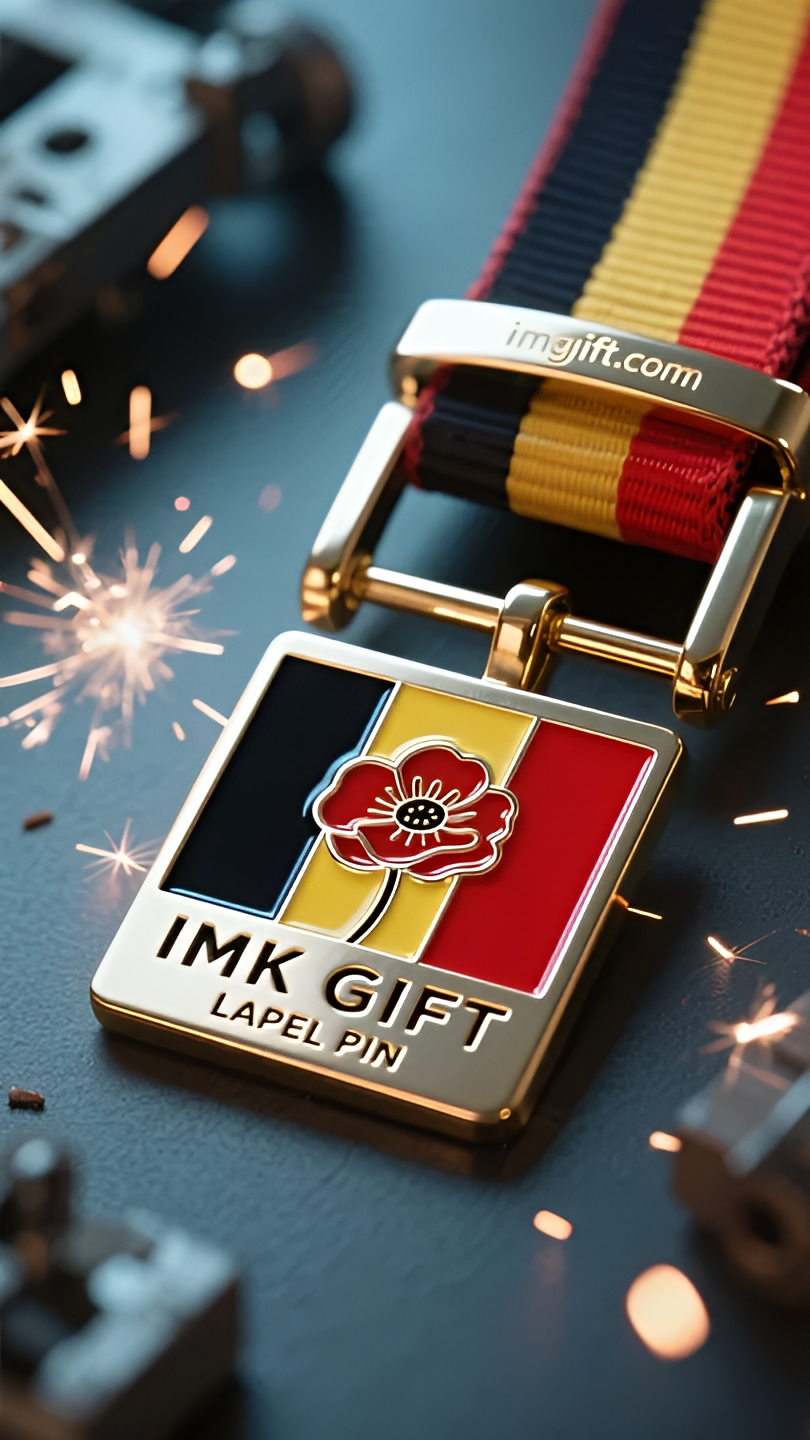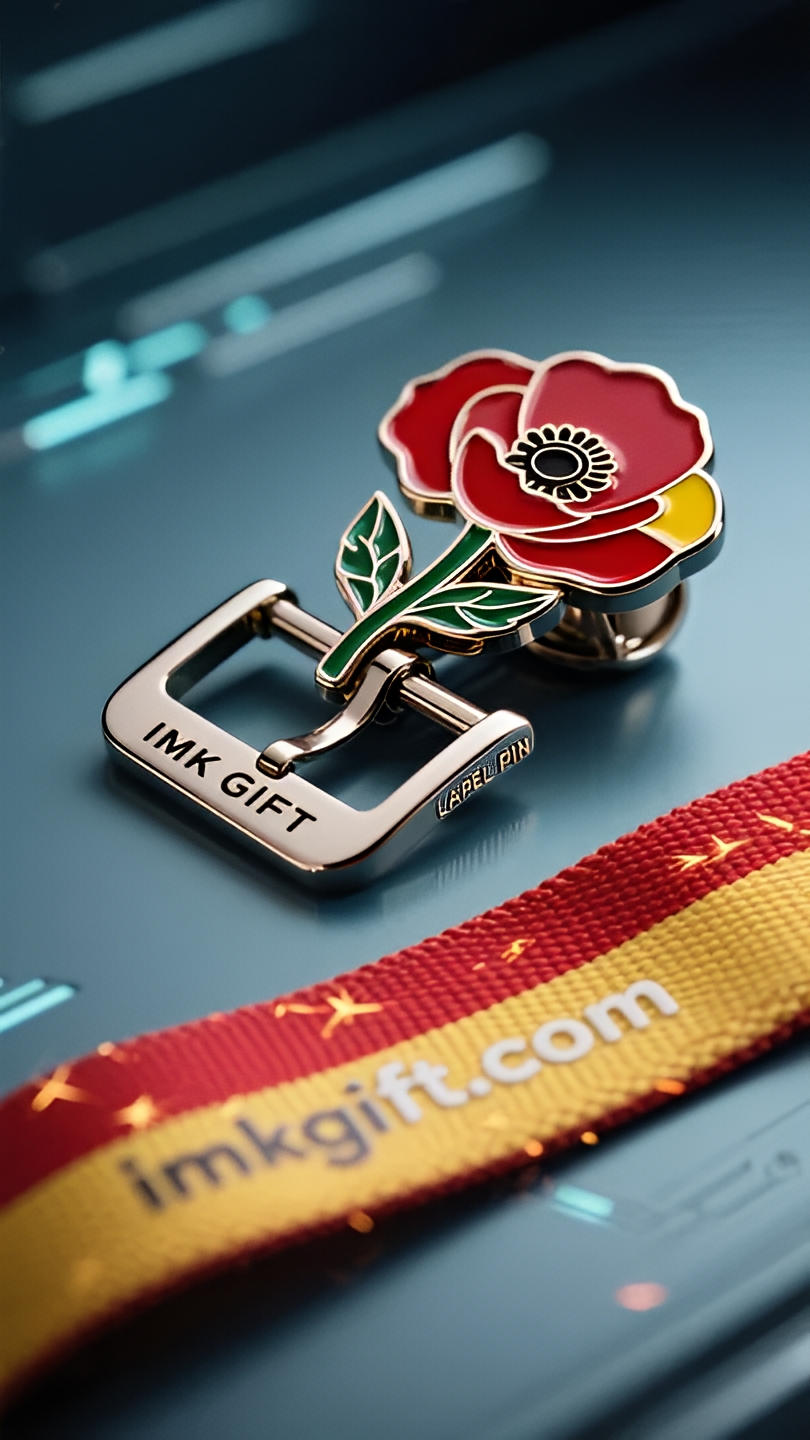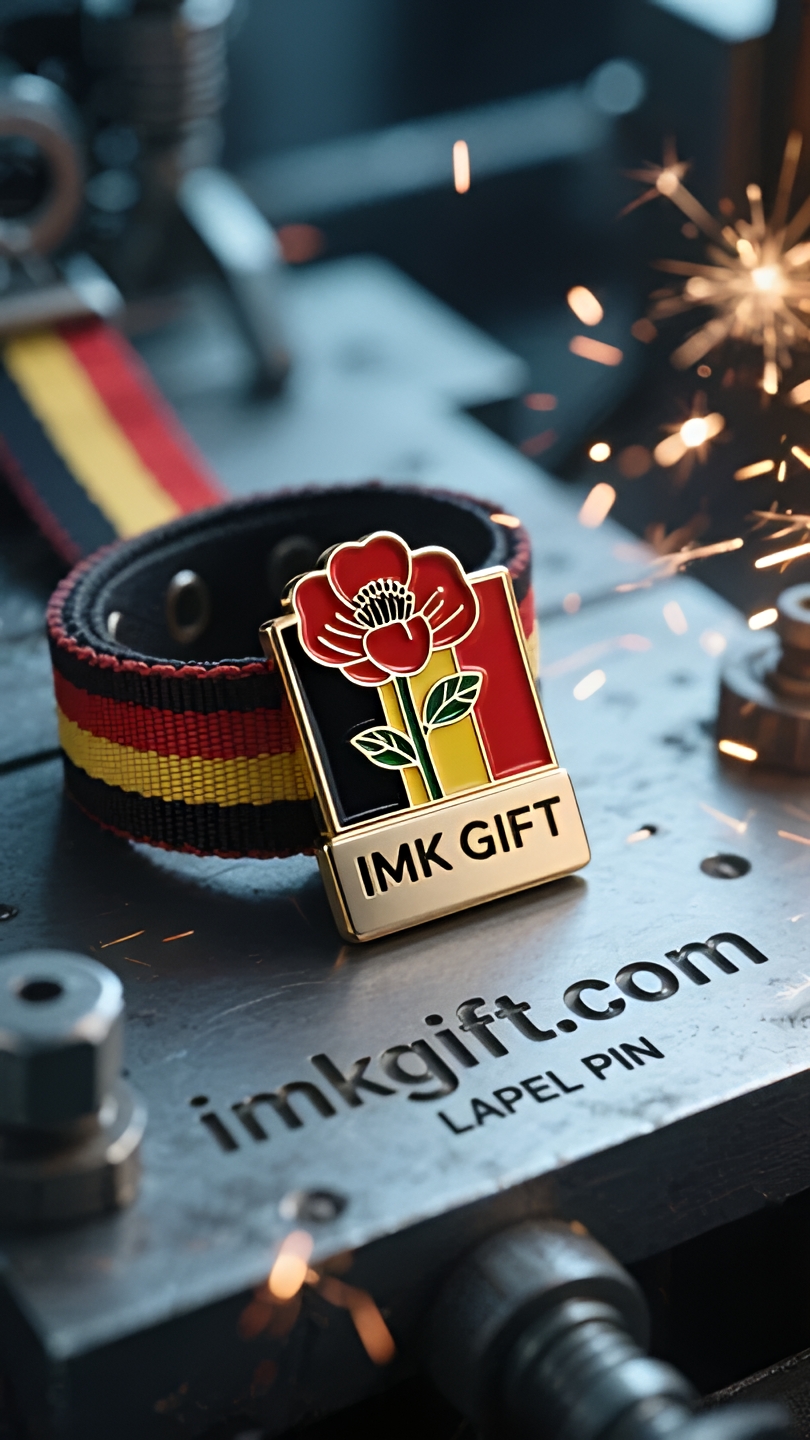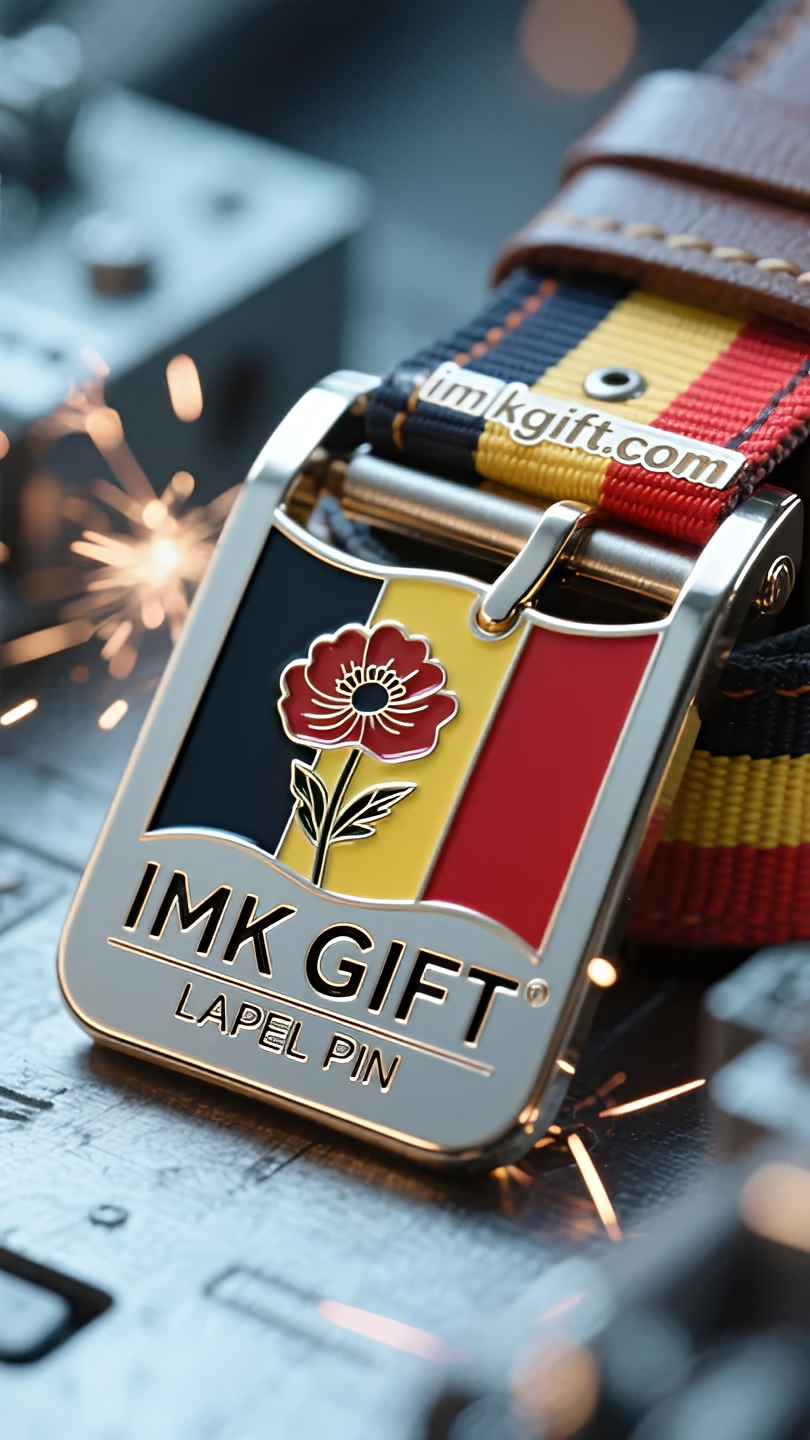in995-Bloody-Poppy-Holds-Dawn
▼
In November, Belgium was filled with cold fog. On the century-old stone bricks of the Grand Place in Brussels, the poppy belt buckle on the chest of the veteran glowed dark red in the morning light. This metal buckle, which is based on the petals of the poppy, is tightly binding history and the present, sacrifice and hope. The black, yellow and red colors of the Belgian flag are just like the spiritual totem of this land: black represents the fertile soil of the Flanders Plain, yellow is the wheat waves harvested under the scorching sun, and red is stained with the bloody dawn of the Battle of Ypres. In 1915, Belgian soldiers forged the first poppy belt buckle with shells in the trenches. Every scratch on the copper-green metal surface is engraved with the oath of “never forgetting” – it is not only a memorial to the fallen comrades, but also a reinforcement of the bond of peace. Now this symbol has been given new vitality. Designers in Brussels have injected modern laser engraving technology into traditional craftsmanship. The miniature national flag enamel inlaid on the inside of the belt buckle will gradually show three-color light at human body temperature. This is in line with the Belgian philosophy of survival: dormancy in the darkness will eventually usher in the dawn, just as a civilization tempered by war can always be reborn from the ashes. When young people wear this ornament that blends the old and the new, they are not only fastening the appropriateness of their clothes, but also turning the courage of their ancestors into the strength to support their backbone. The poppy is no longer just a symbol of mourning. The bite of its metal petals is bursting with vitality that transcends time and space – just like this “European crossroads” sandwiched between the great powers, always fastening its dignity and direction with flexible steel bones.
En noviembre Bélgica estuvo llena de niebla fría. Sobre los ladrillos de piedra centenarios de la Grand Place de Bruselas, las hebillas de los cinturones de color amapola que adornaban el pecho de los veteranos brillaban con un rojo oscuro a la luz de la mañana. Esta hebilla de metal, diseñada a partir de los pétalos de una amapola, conecta estrechamente la historia y el presente, el sacrificio y la esperanza. Los colores negro, amarillo y rojo de la bandera belga son como el tótem espiritual de esta tierra: el negro representa la tierra fértil de la llanura de Flandes, el amarillo son las olas de trigo cosechadas bajo el sol abrasador y el rojo está teñido con el amanecer sangriento de la batalla de Ypres. En 1915, los soldados belgas forjaron la primera hebilla de cinturón con forma de amapola utilizando casquillos de bala en las trincheras. Cada rasguño en la superficie de metal cubierta de pátina estaba grabado con el juramento de “nunca olvidar”: no solo era un homenaje a los compañeros caídos, sino también un refuerzo del vínculo de paz. Hoy en día, este símbolo ha adquirido una nueva vitalidad. El diseñador bruselense ha inyectado tecnología moderna de grabado láser en la artesanía tradicional. El esmalte de la bandera nacional en miniatura incrustado en el interior de la hebilla del cinturón revelará gradualmente una luz tricolor a la temperatura del cuerpo humano. Esto coincide con la filosofía de supervivencia del pueblo belga: la hibernación en la oscuridad acabará dando paso al amanecer, así como la civilización templada por la guerra siempre puede renacer de las cenizas. Cuando los jóvenes se atan este adorno que es una mezcla de lo antiguo y lo nuevo, no solo están ajustándose bien la ropa, sino que también transforman el coraje de sus antepasados en la fuerza para sostener su columna vertebral. La amapola ya no es sólo un símbolo de luto. La intersección de sus pétalos de metal rebosa de vitalidad que trasciende el tiempo y el espacio, como esta “encrucijada de Europa” encajada entre las grandes potencias, que siempre utiliza huesos de acero flexibles para aferrarse a su dignidad y dirección.
十一月的比利时寒雾弥漫,布鲁塞尔大广场的百年石砖上,退伍军人胸前的虞美人皮带扣在晨光中泛着暗红光泽。这枚以虞美人花瓣为原型的金属扣件,正将历史与当下、牺牲与希望紧紧咬合。
比利时国旗的黑黄红三色,恰如这片土地的精神图腾:黑色代表佛兰德斯平原的沃土,黄色是烈日下收割的麦浪,红色则浸染着伊普尔战役的血色黎明。1915年,比利时士兵在战壕里用弹壳锻造出第一枚虞美人皮带扣,铜绿覆盖的金属表面,每一道划痕都镌刻着”永不忘却”的誓言——既是对阵亡同袍的祭奠,更是对和平纽带的加固。
如今这枚象征物被赋予新的生命张力。布鲁塞尔的设计师将现代激光雕刻技术注入传统工艺,皮带扣内侧镶嵌的微型国旗珐琅,在人体温度下会逐渐显现三色光芒。这暗合着比利时人的生存哲学:黑暗中的蛰伏终将迎来破晓,正如战火淬炼的文明总能在灰烬里重生。
当年轻人系上这枚新旧交融的饰物,他们扣住的不仅是衣饰的妥帖,更是将先辈的勇气化作支撑脊梁的力量。虞美人不再只是悼亡的符号,其金属花瓣的咬合处,正迸发出穿越时空的生命力——如同这个夹在列强间的”欧洲十字路口”,永远用柔韧的钢骨扣紧自己的尊严与方向。
▼
Contact Us
📞 Tel: +0086-760-85286839
📧 Email: sales3@imkgift.com








